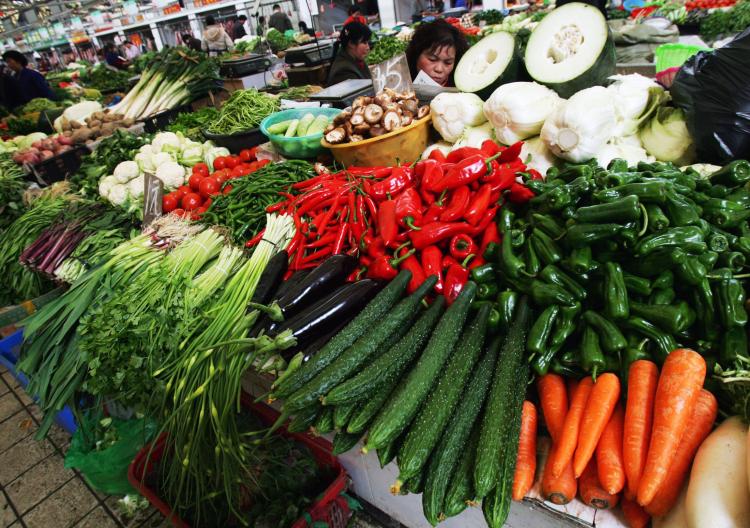Egg Prices At Three Year High
The Daily Economic News reported on Jan. 18 that the price of a half kilo of eggs rose to 4.95 yuan (US$0.75) on the sixteenth, hitting a record high since 2008.
According to a report by the national agricultural and sideline products and price quotation system monitoring, the nationwide egg price started a counter-cyclical increase last October and reached the highest point on Nov. 29 since the monitoring was established in 2008. The price then gradually dropped and stabilized until it started rising again on Jan. 10 and set a new high, an increase of 25 percent.
“I’ve been selling eggs at the Beijing Xinfadi Agricultural Products Wholesale Markets (BXAPWM) for eight years. About 4.9 yuan ($0.74) per half kilo is the highest I’ve seen so far,” Shang Guangli, a big egg dealer, said.
Liu Tong, the statistical director of the BXAPWM, believes that egg prices were running very high last December. Many business companies purchased egg gift boxes from the north as the egg production went down in the south. The increasing demand drove up the price.
The report said that eggs had reached a record high, and that the wholesale price ought not to exceed five yuan per half kilo as there would be no reason for any further price surge.
Vegetable Price Upswing
With the holiday approaching, the vegetable market in northeastern Anshan City was hit by the first price surge wave, with green peppers, pepper and kidney beans all seeing large price increases. It is said that further price increases are on their way the week before the Lunar New Year.
Qianshan Evening News, based in Anshan City of Liaoning Province, reported on Jan. 18 that the wholesale price of vegetable like kidney bean, green pepper and pepper was raised by more than one yuan ($0.15) per half kilo. In addition, cilantro or Chinese parsley was raised by 50 cents. The vegetable price in other farmer’s markets has also been increased. At a supermarket in Anshan’s Tiedong district, the kidney bean is priced at six yuan ($0.91) per half kilo and pepper is more than three yuan ($0.46).
Industry experts predict that the vegetable price peak has not yet come. The peak is usually at a couple of days before the Chinese New Year. It’s estimated that the average price surge will be around 30 percent.
Dried fruits will also increase in price before the holiday. “The price has gone up by 20 percent so far,” said Mr. Zhou, “Watermelon seeds are 10 to 12 yuan ($1.52 to $1.82) per half kilo, sunflower seeds are 8 to 10 yuan ($1.22 to $1.52) per half kilo, and pistachio and hazelnut are 38 yuan ($5.77) per half kilo.” The fruit vendors and wholesalers believe some fruits are already very expensive. The half-kilo price for apple is four to five yuan ($0.76) and Shatang orange is six yuan. “Apples are already very expensive. The price should not increase again.”
According to an npr.org report , “Cabbage has doubled in price since last year,” says a customer at a supermarket in Beijing as she was buying cabbage. “Everything is much more expensive than last year. We may be dissatisfied, but we still need to eat.”
“Prices are going up a lot and it’s getting very difficult,” said Wei Shuping, 60, inside the Chaoyangmen Food Market in Beijing where she saw stands piled high with cabbage, turnips and carrots. “I can’t believe what I’m paying for potatoes. And things are only going to get more expensive during Chinese New Year” next month, she was quoted in a Los Angeles Times report.
Consumer Goods Inflation
Zhu Baoliang, deputy director at the Economic Forecast Department of the State Information Center, said that last year’s agricultural products and labor cost surge would certainly be expanded to the consumer goods industry. The increase in the prices of the agricultural products in the second half of last year has now spread to consumer goods.
According to a survey of 50 of major food price changes published by the National Bureau of Statistics in early January, except for white duck meat, all the other food prices have not dropped. The vegetable price has the biggest increase, with green beans rising by 13.4 percent.
In addition, the first batch of green tea in 2011 has entered the Beijing market at an increased price. For example, the new Hainan Shuixian and Hainan Cuiluo tea are priced at 68 yuan ($10.33) and 58 yuan ($8.81) per quarter kilo respectively, while last year’s prices were 60 yuan ($9.11) and 50 yuan ($7.59).
The same Daily Economic News report said that the increasing prices for raw materials are an important driver of consumer goods.
Increased Costs for Beverages
The Beverage Industry Association pointed out that over 60 percent of beverages consumed in China are made from agricultural products. Compared to a year earlier, the agricultural products used by beverages have increased by more than 50 percent and the beverage packaging material cost has also seen a 20 percent increase.
From carbonated Coca-Cola, to Master Kong’s tea, to Queer juice, to Wahaha Milk products, the beverage industry has set off a round of price increases. Juices have risen 10 percent while carbonated drinks by five percent.
Master Kong confirmed that the company had recently raised its beverage and bottled water price by 50 to 100 cents per case. Coca-Cola and Pepsi are likely to raise their products price by 10 percent.
According to a Taizhou Business Daily report, the carbonated drinks price has been raised in the supermarkets during the New Year. Coke and Pepsi cost 20 more cents per unit. Wahaha milk drink price has been raised from 4 to 4.5 yuan ($0.61 to $0.68) per bottle at a snack shop within the Taizhou Economic Development District in Zhejiang Province.
The beverage industry price surge is again caused by the increase in the cost of production. The substantial price rise in raw materials such as apples and oranges, combined with the price increase of sugar and the rising cost of labor and transportation and packaging, drove up the beverage prices. Although the beverage products’ promotion hasn’t been reduced, it is greatly scaled down.
Possible Interest Rate Increase Prior to New Year
The price increase in consumer goods aggravated the concerns over inflation expectations. According to Zhu’s analysis, the factors contributing to the recent price rises also include: last December’s rate hike, new markets’ price adjustments, resource products’ price adjustment, the stimulating effect by the extension of China’s resources tax, and the impact of water, electricity, natural gas and other resources price rationalization.
On Jan. 14, the central bank raised the reserve requirement ratio for the seventh time since the start of last year. Economists think it’s likely to raise interest rates before the Chinese New Year.
Read the original Chinese article







